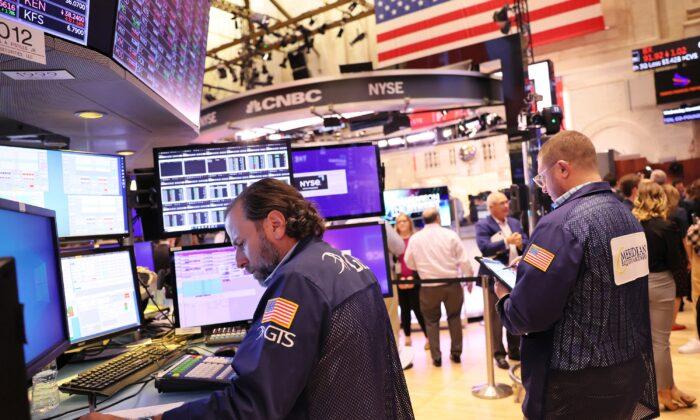Japanese stocks plunged on Aug. 5 in their biggest drop ever, amid concerns about the global economy and fresh forecasts of a possible recession.
The Nikkei share average drop comes as the dismal Aug. 2 jobs data in the United States heightened worries of a possible recession, and as the yen rallied to seven-month highs versus the dollar.
Japan’s banking stocks led the rout, pushing the Nikkei into bear market territory with a 27 percent drop from its July 11 peak of 42,426.77. From July 11 to the Aug. 5 close of 31,458.42, the Nikkei has wiped out 113 trillion yen ($792 billion) of its peak market value.
“The rapid move in the yen is putting downward pressure on Japanese equities, but it’s also driving an unwind of a major carry trade—investors had leveraged up by borrowing in yen to buy other assets, chiefly U.S. tech stocks,” Capital.com senior financial market analyst Kyle Rodda said. “We are basically seeing a mass deleveraging as investors sell assets to fund their losses.”
Inside the United States
Last week’s Department of Labor report showing that hiring by U.S. employers significantly slowed last month by much more than expected has convulsed financial markets. While job growth had been on the decline before last month, it was relatively stable despite the Federal Reserve’s move to push interest rates to their highest levels in about two decades.In the report, nonfarm payrolls increased by 114,000 jobs in July, well below the average of about 215,000 jobs added per month over the past year. That’s also lower than the 200,000 jobs that economists say are needed to keep up with growth in the population, which accounts for the recent surge in legal and illegal immigration.
“If Fed officials had seen this report, they would have cut rates by 25 basis points this week,” Boston College economics professor Brian Bethune said. “There is absolutely no justification for continuing to exert an elevated level of monetary restrictiveness on the economy.”
Early on Aug. 5, the U.S. Dow Jones Industrial Average futures fell by about 600 points, or 1.5 percent, while the Nasdaq-100 dipped by 3.4 percent. U.S. Treasury yields dropped as well, with the benchmark 10-year note at 3.79 percent. That’s down from a week before, when it yielded 4.20 percent.
Last week, Fed Chairman Jerome Powell told reporters that the U.S. central bank is likely to issue its first rate cut in four years, noting that the economy is making progress on persistent inflation.
“We’re getting closer to the point at which it’ll be appropriate to reduce our policy rate,” Powell said, “but we’re not quite at that point.”
In a transcript of a statement issued on July 31, the Federal Reserve said that U.S. job increases “have moderated” and noted that the unemployment rate has been on the rise.
“Inflation has eased over the past year but remains somewhat elevated. In recent months, there has been some further progress toward the Committee’s 2 percent inflation objective,” the Fed said, reiterating that it wants to keep inflation at about 2 percent in the long term.







